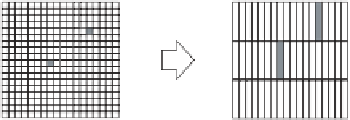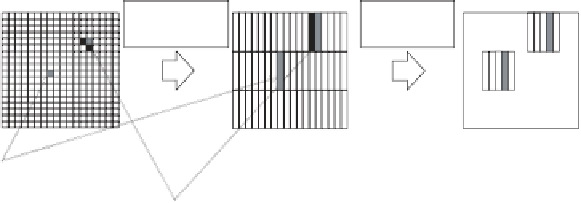Geoscience Reference
In-Depth Information
Hitachi SH7708 CPUs with majority voting technique to enhance radiation
tolerance, and also by using flexible programmable gate arrays. A single
unit of driver and readout system operates in turn each of five CCDs, four
as main detector and another one as solar calibrator.
As a deep space mission, the downlink bit rate of telecommunication
severely constrains the total amount of data production. Data reduction
by onboard analysis as well as the programmable sequenced observation is
required to operate effectively and achieve scientific goals.
4. Method of Onboard Data Analysis
4.1.
Event extraction
The XRS requires high-data reduction since its CCD readout rate is
2 Mbytes in 8 s (125 kHz), which is almost equal to the total data allo-
cation for the XRS in a day. However, the X-ray flux is not so high even
during enhanced solar activity, and most of pixels have no X-ray derived
electrons. Then only X-ray events should be effectively extracted. For that
purpose, we apply line-binning of 16 pixels for simplifying the hardware
logics, in which case the data of the both side pixels have only to be com-
pared rather than those of the surrounding eight pixels. Those pixels whose
value exceeds the average by commanded threshold level are regarded as
X-ray events and data of 5 pixels are stored into FIFO memory for software
analysis. The schematic diagram is shown in Fig. 2.
X-ray Pho
to
n
X-ray Pho
to
n
16pixel
Line-Binning
Event
Extracton
Larger than
threshold?
Data of 5 pixels are stored into
FIFO for software analysis
Only both side pixels are
compared rather than the
surrounding 8 pixels
Single Event
Split Event
Fig. 2. A schematic diagram of the event extraction is shown. Single and split events
are classified as proper grades with the onboard software analysis.












































































































































































































































































































































